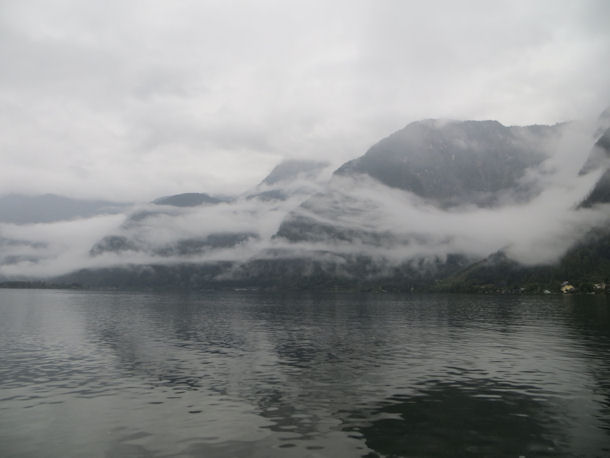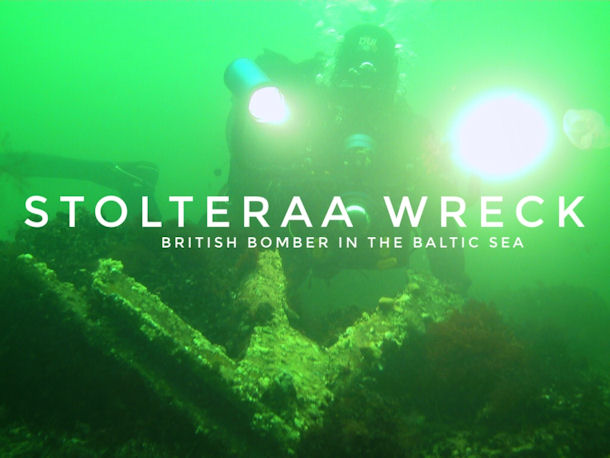by Roger Blum
Treasure Stories from the Salzkammergut
|
|
The Salzkammergut. This region in northern Austria, around the towns of Bad Ischl and Hallstatt, was a refuge for many prominent Nazi figures during the last days of World War II. This included the boss of the Reich Main Security Office (RSHA) Ernst Kaltenbrunner, Robert Ley of the Nazi’s catch-all union the German Labour Front (DAF), Konrad Henlein, the leader of Czechoslovakia’s Nazi-compliant Sudeten Germans party, and Otto Skorzeny, who achieved stardom during ‘Operation Eiche’, the Nazi’s liberation of the then imprisoned Italian dictator Benito Mussolini. But these weren’t the only occupants of area. Numerous leaders of governments and movements allied with Germany during the Thirties and Forties fled to the Salzkammergut at the end of the war, including the Hungarian Prime Minister Szalasi, Croatia's leader Ante Pavelic, the Slovakian president and priest Jozef Tiso, Estonia’s Hjalmar Mäe, and the Romanian fascist leader Horia Sima.
Rumours quickly spread of embezzled money, war coffers and gold that had been left at the bottom of Salzkammergut’s lakes. Since then, divers and treasure hunters from all over the world have come to the Salzkammergut to seek their illicit fortunes.
|
|
Tracking down treasure in Lake Toplitz
|
Lake Toplitz is probably the most mysterious lake in the Salzkammergut. It is located at the foot of the Totes Gebirge and lies 718 m above sea level. During the last days of WWII, SS and Wehrmacht units are said to have sunk dozens of crates containing gold, banknotes and secret documents. The remnants of the legendary Amber Room are also suspected to be at the bottom of the 100 m deep lake. While many of these claims remain unproven, it is the case that many WWII artefacts have been recovered from the lake. Amongst them there are several objects belonging to the "Chemical Physical Experiment Station" of the German Navy, which carried out secret underwater experiments. But perhaps more spectacularly, a bundle of counterfeit money was found underwater, worth a massive 72.8 million pounds. Since then there have been some spectacular searches in Toplitz.
|
|
Sea mine and torpedo "Zaunkönig" (engl. "Wren")
|
|
Even though diving in Lake Toplitz is strictly forbidden, a trip to the mysterious site makes a worthwhile trip. The best place to park is at Gasthof Veit inn in the district of Gößl am Grundlsee. From here you can reach the lake within 15 minutes on foot. The trail leads past the Gößler rock face, where the Waffen-SS tested large-calibre projectiles - so-called “bunker busters” - that packed enormous penetrative power.
|
|
After about 1.5 km along the Traun, you reach Lake Toplitz and an old fisherman's hut currently occupied by a restaurant. In the wood-panelled entrance area of the site, there are inconspicuous photos, newspaper articles and a printing press plate, alongside copies of some particularly suspicious counterfeit English banknotes…
|
|
The secret counterfeiting mission "Operation Bernhard" saw the Nazis print a whopping 130 million British pounds.
|
|
The largest counterfeiting operation in history, the Nazi’s “Operation Bernhard" ended its life at the Lake Toplitz. Under the direction of SS-Sturmbannführer (or Assault Unit Leader) Bernhard Krüger at Sachsenhausen concentration camp near Berlin, some 180 prisoners forged and produced vast quantities of foreign banknotes, documents and stamps. Large numbers of British bank notes was printed in particular, in a bid to weaken the UK’s economy.
|
 |
|
As WWII reached its last year, on 20 February 1945, work on the bank notes came to halt: the production plant, the counterfeits and the concentration camp’s entire archive - with information about agents, manufacturers and suppliers of Sachsenhausen - were taken to the Salzkammergut in Austria. The so-called "Operation Bernhard" came to an end on the day that these documents, along with the millions of banknotes, were sunk at Lake Toplitz. Even today, some boxes containing secret documents that are left over from WWII still rest at the bottom of the lake. That’s enough to keep the flame of treasure fever alive...
|
|
Copies of counterfeit British banknotes
|
|
In addition to thousands of books from Hitler's private library, Richard Wagner’s original musical scores were kept at the Villa Castiglione in Grundlsee.
|
|
West of Lake Toplitz is Lake Grundlsee. Hitler's private library was brought here in 1944. Thousands of distinguished books and papers are thought to have been housed in the Villa Castiglione, including original scores penned by German composer Richard Wagner. After the end of the war, the Americans are believed to have confiscated the books, taking them to the Congress Library in Washington. However, the musical scores apparently never arrived at their destination and have been lost ever since.
|
|
Richard Wagner’s original scores, which Hitler received as a gift, were kept at Villa Castiglione, but were lost after 1945 when they were transported from the site.
|
|
Hitler's private collection of paintings was left at an inn on Lake Grundlsee.
|
|
Hitler's private collection of paintings also found their way to the Salzkammergut. They were stored in the Gasthof Petter inn (today Landhaus Agathawirt) in St. Agatha in the municipality of Bad Goisern. They were originally intended for the Berlin Reich Chancellery, the Führer Building in Munich and Hitler’s Alpine residency, the Berghof in Berchtesgaden. The paintings were taken away by the Americans and distributed to museums in the USA and Switzerland after temporary storage in Munich’s Kunstmuseum.
|
 |
 |
|
Another interesting treasure story leads us to Lake Hallstatt. This body of water, 5,9 km long and 2,3 km wide, at the northern foot of the Dachstein Mountains has a maximum depth of 125 m and there are a dozen sign-posted dive sites here. Bizarrely, around the shore area of the lake, divers have managed to recover huge numbers of 500-crown bills - between 1974 to 1984 about 90 million crowns were found! They belonged to the coffers of the Slovak state, crown and church, which the first President of Slovakia Dr. Jozef Tiso took with him as he fled his native country for the Salzkammergut in 1945. It is said that on 12 September 1974 divers found 12.5 kg of Reichsbankgold near steep face of Werflingen in Lake Hallstatt.
|
|

|

|
|
If that wasn’t enough, not far from Lake Hallstatt a treasure hunter stumbled upon something even older, a prehistoric treasure made of gold. The ancient booty was made up two pairs of decorated arm spirals and five pairs of simple gold wire spiral rings. The find was probably buried there as a ritual offering.
|
|
A selection of the many interesting discoveries removed from the lakes of Salzkammergut can be admired in Gerhard Zauner's small diving museum in the Hallberg Pension. It is located in Seestraße 113 in the middle of Hallstatt.
|
|
Gerhard Zauner's diving inn in Hallstatt at the Hallstaetter Lake
|
|
|
This could be interesting for you:
|

The Search for a Lost British Bomber in a Lake near Berlin
At the beginning of World War II, Commander-in-Chief of the German Luftwaffe Hermann Göring declared during a radio address: "No enemy bomber can reach the Ruhr. If one reaches the Ruhr, my name is not Göring. You may call me Meyer.” However, only a few years later, Adolf Hitler’s trusted advisor and war-chief was forced to make good on his promise. In 1940, Göring apparently introduced himself as Herr Meyer on arrival at a Berlin air-raid shelter while taking refuge from one of the many Allied bomber units that had started to decimate Germany’s cities.
[read more]
|
|
|

An Aegean Wreck: The German Warplane that Chronicles the Battle of Crete
About 800m off the coast of the small village of Anissaras near Hersonissos (Chersónissos) on the Greek island of Crete lies one of the most famous dive sites in the Mediterranean Sea. At the bottom of the Aegean Sea, at a depth of 24m, lays the well-preserved wreckage of a German World War II Messerschmitt Bf 109 fighter. The question is, was the German airplane shot down during "Operation Mercury" in May 1941?
[read more]
|
|

Stolteraa Wreck - Lost British Bomber on Baltic Sea near Warnemünde
Just off from Stolteraa, a small stretch of coast on the Baltic Sea near Warnemünde, lies in a depth of 6 m the wreck of an English bomber. The remains of the plane are located 1.5 nm west of the lighthouse in the area. Theoretically, the spot can be reached by swimming from land. To get there and back, however, it is approximately 1,400 m, a distance not to be underestimated. Therefore it’s preferable to dive by boat.
[read more]
|
|
|
|
|
The opinions of other divers are both incredibly interesting and helpful to us. Through the experiences of other travellers, we have been able to uncover many useful tips and gain wonderful insight into other countries, as well as finding out about accommodation, the local community, and various activities, all in advance of arriving at our planned destination. Therefore, we would be very pleased to receive any other travel reports on the topic of diving & snorkelling in Austria, which we would gladly present here on our website. Simply contact us at info @ easydive24.de
|
|
|
|

